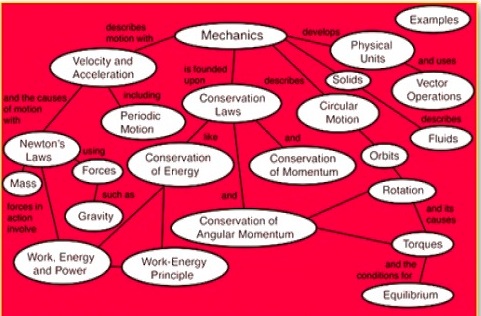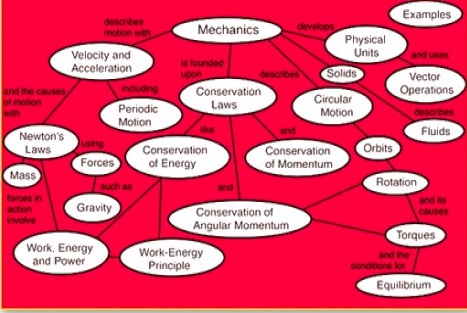विनय एक्सप्रेस शैक्षणिक आलेख, ऑस्ट्रलिया-बीकानेर। फिजिक्स विषय के सुप्रसिद्ध प्रोफेसर ओम कुमार हर्ष और सेवा निवृत्त व्याख्याता नंदलाल सेवग द्वारा फिजिक्स के वि़द्यार्थीयों को बेसिक तथ्यात्मक जानकारी उपलब्ध कराने के उद्देश्य से द यूनिक काॅनसेप्ट ऑफ फिजिक्स श्रृंखला संचालित की जा रही है। इस सीरीज में विनय एक्सप्रेस के पाठकों के लिए दो आलेख प्रकाशित किए जा चुकें है। तीसरा आलेख द्विभाषा में प्रो. हर्ष द्वारा जारी किया गया है। विनय एक्सप्रेस के सुधि पाठकों के लिए यूनिक काॅन्सेन्प्ट ऑफ फिजिक्स सीरीज का तीसरा चरण प्रस्तुत है। इस आलेख को पढ़ने के पश्चात रीर्डस अपनी प्रतिक्रिया प्रो. ओम कुमार हर्ष की मेल आईडी oharsh@gmail.com पर सीधे प्रेषित कर सकते हैं।

Question 1
What is the difference when we measure torque/angular momentum about a point and about an axis?
Answer: 1 We consider torque about point in mechanics. It comes from the fundamental definition. Torque about an axis is taken when a body is hinged about that axis. We consider torque about it because only the component of torque that is along the axis is responsible for rotation rest gets cancelled.
प्रश्न 1: जब हम एक बिंदु और एक अक्ष के बारे में टोक़ / कोणीय गति को मापते हैं तो क्या अंतर होता है?
उत्तर: 1 हम यांत्रिकी में बिंदु के बारे में टोक़ पर विचार करते हैं। यह मौलिक परिभाषा से आता है। एक अक्ष के बारे में टोक़ तब लिया जाता है जब कोई शरीर उस अक्ष के बारे में टिका होता है। हम इसके बारे में टोक़ पर विचार करते हैं क्योंकि धुरी के साथ केवल टोक़ का घटक रोटेशन रोटेशन को रद्द करने के लिए जिम्मेदार है।
Question 2: How the different properties of mechanics are co-related or connected?
Answer: Figure below nicely demonstrates the correlation among different properties of mechanics:
Ref: http://hyperphysics.phy-astr.gsu.edu/hbase/hframe.html
प्रश्न 2: यांत्रिकी के विभिन्न गुण सह-संबंधित या जुड़े हुए कैसे हैं?
उत्तर: नीचे दिए गए चित्र यांत्रिकी के विभिन्न गुणों के बीच संबंध को प्रदर्शित करते हैं:
Ref: http://hyperphysics.phy-astr.gsu.edu/hbase/hframe.html
Question 3: What is the difference between the Linear motion and Rotational motion?
Answer: Linear motion involves an object moving from
one point to another in a straight line.
- Rotational motion involves an object rotating
about an axis.
प्रश्न 3: रैखिक गति और घूर्णी गति में क्या अंतर है?
उत्तर: रेखीय गति में किसी वस्तु से गति होती है एक सीधी रेखा में एक से दूसरे बिंदु पर।
घूर्णी गति में एक वस्तु घूमती है एक अक्ष के बारे में।
Question 4: What are the examples of the Rotational motion?
Answer: Examples include a merry-go-round, the rotating
earth, a spinning skater, a top, and a turning wheel.
प्रश्न 4: घूर्णी गति के उदाहरण क्या हैं?
उत्तर: उदाहरणों में एक मीरा-गो-राउंड, घूर्णन शामिल है
पृथ्वी, एक कताई स्केटर, एक शीर्ष, और एक मोड़ पहिया।
Question 5: What is the Rotational velocity? What is its Unit?
Answer: Rotational velocity is how fast the object is turning.
Units: revolutions per minute (rpm); degrees per second.
Rotational displacement is how far the object rotates.
- Units: fractions of a complete revolution; degrees; radians
- 1 complete revolution = 360º = 2 π radians
- Analogous to linear displacement: the straight-line distance travelled by an object (including direction of travel)
प्रश्न 5: घूर्णी वेग क्या है? इसकी इकाई क्या है?
उत्तर: घूर्णी वेग वस्तु को कितनी तेजी से मोड़ रहा है।
इकाइयाँ: क्रांतियाँ (revolutions) प्रति मिनट (आरपीएम); प्रति सेकंड डिग्री।
घूर्णी विस्थापन, वस्तु कितनी दूर घूमती है।
- इकाइयाँ: एक पूर्ण क्रांति (revolution) के अंश; डिग्री; रेडियंस
- पूर्ण क्रांति = 360º = 2 π रेडियन
- रैखिक विस्थापन के अनुरूप: सीधी रेखा की दूरी किसी वस्तु द्वारा यात्रा की जाती है (यात्रा की दिशा सहित)
Question 6: What is the Rotational acceleration? What is its Units?
Answer: Rotational acceleration is the rate of change of rotational velocity.
- Units: revolutions per second per second (rev/s2).
प्रश्न 6: घूर्णी त्वरण क्या है? इसकी इकाइयाँ क्या हैं?
उत्तर: घूर्णी त्वरण घूर्णी वेग के परिवर्तन की दर है।
इकाइयाँ: क्रांतियों (revolutions) प्रति सेकंड प्रति सेकंड (रेव (revolution) / s2)।
Question 7: How can we use Mass, Momentum, Energy, and Newton’s Second Law for the rotational motion?
As we know that use mass, linear momentum, translational kinetic energy, and Newton’s 2nd law to describe linear motion, we can also describe a general rotational motion using equivalent scalar/vector/tensor quantities:
- Mass Rotational inertia:
- Linenar/angular momentum:
- Force/ Torque:
- Kinetic energy:
For example, just as we use the equation of motion F = ma to describe a linear motion, we can use its counterpart. The descriptions are equivalent, and the choice can be made purely for the convenience of use. The torque on the particle is equal to the moment of inertia about the rotation axis times the angular acceleration. Means, Torque = Moment of Inertia. Angular Acceleration.
Note: As we use mass, linear momentum, translational kinetic energy, and Newton’s second law to describe linear motion, we can describe a general rotational motion using equivalent scalar/vector/tensor quantities.
प्रश्न 7: घूर्णी गति के लिए हम मास, मोमेंटम, ऊर्जा और न्यूटन के दूसरे नियम का उपयोग कैसे कर सकते हैं?
उत्तर 7: जैसा कि हम जानते हैं कि रैखिक गति का वर्णन करने के लिए द्रव्यमान, रैखिक गति, पारभासी गतिज ऊर्जा और न्यूटन के दूसरा नियम का उपयोग करते हैं, हम समान स्केलर / वेक्टर / टेनसर मात्रा का उपयोग करके एक सामान्य घूर्णी गति का भी वर्णन कर सकते हैं:
- मास घूर्णी जड़ता:
- रैखिक / कोणीय गति:
- बल / टोक़:
- गतिज ऊर्जा:
उदाहरण के लिए, जैसे हम एक रेखीय गति का वर्णन करने के लिए गति F = ma के समीकरण का उपयोग करते हैं, हम एक कोणीय गति का वर्णन करने के लिए इसके कण पर टोक़ = जड़त्व आघूर्ण . कोणीय त्वरण
विवरण समकक्ष हैं.
Question 8: Describe the definition of key term in linear and angular motion?
Answer 8: Definition of Key Items are as follows:
- uniform circular motion: Movement around a circular path with constant speed.
- torque: A rotational or twisting effect of a force; (SI unit newton-meter or Nm; imperial unit foot-pound or ft-lb)
- rotational inertia: The tendency of a rotating object to remain rotating unless a torque is applied to it.
प्रश्न 8: रैखिक और कोणीय गति में महत्वपूर्ण शब्द की परिभाषा बताइए?
उत्तर 8: प्रमुख वस्तुओं की परिभाषा इस प्रकार है:
- एकसमान वृत्तीय गति: स्थिर गति के साथ एक वृत्ताकार पथ पर घूमना।
- टोक़: एक बल का घूर्णी या घुमा प्रभाव; (एसआई इकाई न्यूटन-मीटर या एनएम; शाही (imperial) इकाई फुट-पाउंड या फीट-एलबी)
- घूर्णी जड़ता: एक घूर्णन वस्तु की प्रवृत्ति जब तक एक टोक़ उस पर लागू नहीं होती है तब तक घूमती रहती है।
नोट: जैसे ही हम द्रव्यमान, रैखिक गति, पारभासी गतिज ऊर्जा और न्यूटन के दूसरे नियम का उपयोग रैखिक गति का वर्णन करने के लिए करते हैं, हम समान स्केलर / वेक्टर / टेन्सर मात्राओं का उपयोग करके एक सामान्य घूर्णी गति का वर्णन कर सकते हैं।
Question 9: Define work and energy?
· Work and Energy:
- The ideas of work and energy are directly bound to the idea of force since an applied force can do work on an object and affect a change in energy.
- Energy is defined as the capacity or ability to carry out or do the work.
· Work
- The idea of work in physics is considerably beyond carefully defined than the ordinary utilization of the word.
- Work is performed on an item or object when an applied force pushes it through a distance. In our daily life, work is linked to costs of powerful effort, but this is not the case in the language of physics.
A person that retains a powerful object does no physical work because the force is not allowing to push the object beyond a distance.
Work, corresponding to the physics description, is being done while the weighty object is being raised but not while the object is immobile.
work is W = F · x, where F is the used force and x is the distance pushed, that is, translation or displacement. Work is a scalar quantity means it has not direction. The SI unit for work is the joule (J), which is newton‐meter or kg m/s2.

प्रश्न 9: कार्य /काम और ऊर्जा को परिभाषित करें?
- कार्य /काम और ऊर्जा:
- कार्य /काम और ऊर्जा के विचार सीधे बल के विचार से बंधे हैं क्योंकि एक लागू बल किसी वस्तु पर काम कर सकता है और ऊर्जा में परिवर्तन को प्रभावित कर सकता है।
- ऊर्जा को कार्य करने की क्षमता के रूप में परिभाषित किया गया है।
- कार्य /काम
- भौतिकी में क्षमता का विचार शब्द के सामान्य उपयोग की तुलना में काफी परे/दूर तक परिभाषित है।
- कार्य किसी वस्तु या वस्तु पर किया जाता है जब एक लागू बल इसे दूरी से धकेलता है। हमारी दैनिक जिंदगी में, काम शक्तिशाली प्रयास के लागत से जुड़ा हुआ है, लेकिन भौतिकी की भाषा में ऐसा नहीं है।
एक व्यक्ति जो एक शक्तिशाली वस्तु को बरकरार रखता है वह कोई शारीरिक काम नहीं करता है क्योंकि बल वस्तु को दूरी से परे धकेलने की अनुमति नहीं देता है।
भौतिकी विवरण के अनुसार काम किया जा रहा है, जबकि वज़नदार वस्तु को उठाया जा रहा है लेकिन वस्तु स्थिर नहीं है।
कार्य W = F · x है, जहाँ F का उपयोग किया गया बल है और x दूरी, यानी अनुवाद या विस्थापन है। काम एक अदिश (scalar) राशि है जिसका अर्थ है कि यह दिशा नहीं है। कार्य के लिए SI इकाई जूल (J) है, जो न्यूटन kg मीटर या किग्रा मी / s2 है।
Question 10. What is the kinetic energy? How can we define it mathematically?
Answer: Kinetic energy is the energy of an object when it is in motion. The representation for kinetic energy can be developed from the definition for work and from kinematic relationships.
Consider a force applied parallel to the surface that moves an object with constant acceleration.
- From the definition of work, from Newton’s second law of motion, and from kinematics, E. = (1/2) mv2 Kinetic energy is a scalar quantity with the same units as work, joules (J). For example, a 2 kg mass moving with a speed of 3 m/s has a kinetic energy of 9 J.
- The above derivation shows that the network is equal to the change in kinetic energy. This relationship is called the work‐energy theorem:
प्रश्न 10. गतिज ऊर्जा क्या है? हम इसे गणितीय रूप से कैसे परिभाषित कर सकते हैं?
उत्तर: गति में होने पर काइनेटिक ऊर्जा किसी वस्तु की ऊर्जा है। गतिज ऊर्जा का प्रतिनिधित्व कार्य के लिए परिभाषा से और गतिज संबंधों से विकसित किया जा सकता है।
सतह के समानांतर लागू एक बल पर विचार करें जो किसी वस्तु को निरंतर त्वरण के साथ स्थानांतरित करता है।
- कार्य की परिभाषा से, न्यूटन के गति के दूसरे नियम से, और कीनेमेटीक्स से, गतिज ऊर्जा = (1/2) mv2 गतिज ऊर्जा (काइनेटिक ऊर्जा) एक स्केलर मात्रा है जिसमें काम, जूल (जे) जैसी इकाइयाँ हैं। उदाहरण के लिए,
3m/s की गति से चलने वाले 2 किलो द्रव्यमान में 9 जे की गतिज ऊर्जा होती है।
- उपरोक्त व्युत्पत्ति से पता चलता है कि कार्य गतिज ऊर्जा में परिवर्तन के बराबर है।
Question 11: What is the potential energy? Give its example?
- Potential energy, described to as accumulated energy, is the capability of a system to make work due to its position or internal structure.
- Examples are energy stored in a pile driver at the top of its path or energy stored in a coiled spring. Potential energy is measured in units of joules.
प्रश्न 11: स्थितिज ऊर्जा क्या है? इसका उदाहरण दीजिए?
- स्थितिज ऊर्जा, जिसे संचित ऊर्जा के रूप में वर्णित किया गया है, यह एक प्रणाली की क्षमता है जो इसकी स्थिति या आंतरिक संरचना के कारण काम करती है।
- उदाहरण ऊर्जा एक ढेर चालक में अपने पथ के शीर्ष पर संग्रहीत होती है. जूल की इकाइयों में संभावित ऊर्जा को मापा जाता है।
Question 12: What is the difference between kinetic and kinematics?
Answer: Kinetics is centred on understanding the origin of various kinds of motions of an object such as rotational motion in which the object encounters force or torque. Kinematics explains the terms such as acceleration, velocity, and position of objects.
Kinematics explains the terms such as acceleration, velocity, and position of objects. The mass of the object is not considered while studying the kinematics.
| Distinction or Difference Between Kinetics and Kinematics | |
| Kinetics | Kinematics |
| Analyses or study of the reason for the motions of the object | Analyses or study of the position, acceleration, speed of an object |
| In this issue mass of the body is considered | Here mass of the object is not considered |
| It is used in the design of vehicles | It is used to examine the movement of planetary bodies |
| Here the Force is taken into account | Here the Force is not taken into account |
| It does not include any mathematical representations | This includes mathematical expressions |
प्रश्न 12: काइनेटिक्स और किनेमेटिक्स में क्या अंतर है?
उत्तर: काइनेटिक्स किसी वस्तु के विभिन्न प्रकार के गतियों की उत्पत्ति को समझने पर केंद्रित है जैसे कि घूर्णी गति जिसमें वस्तु का बल या टॉर्क का सामना होता है। किनेमैटिक्स त्वरण, वेग और वस्तुओं की स्थिति जैसे शब्दों की व्याख्या करता है।
किनेमैटिक्स त्वरण, वेग और वस्तुओं की स्थिति जैसे शब्दों को समझाता है। किनेमेटिक्स का अध्ययन करते समय वस्तु के द्रव्यमान पर विचार नहीं किया जाता है।
काइनेटिक्स और किनेमेटिक्स के बीच अंतर विवरण:
काइनेटिक्स
वस्तु की गतियों के कारण का विश्लेषण या अध्ययन
किनेमेटिक्स
किसी वस्तु की स्थिति, त्वरण, गति का विश्लेषण या अध्ययन
काइनेटिक्स
इस वस्तु के द्रव्यमान को माना जाता है।
किनेमेटिक्स
यहाँ वस्तु के द्रव्यमान को नहीं माना जाता है
काइनेटिक्स
इसका उपयोग वाहनों के डिजाइन में किया जाता है
किनेमेटिक्स
इसका उपयोग ग्रहों के पिंडों की गति की जांच करने के लिए किया जाता है
काइनेटिक्स
यहां फोर्स का ध्यान रखा जाता है।
किनेमेटिक्स
यहां फोर्स का ध्यान नहीं रखा जाता है
काइनेटिक्स
इसमें कोई गणितीय प्रतिनिधित्व शामिल नहीं है
किनेमेटिक्स
इसमें गणितीय अभिव्यक्तियाँ शामिल हैं
Question 13: What is the gravitational potential energy?
Answer: Gravitational potential energy is energy of the position of a body. First, think about the gravitational potential energy close to the surface of the earth where the acceleration due to gravity (g) is approximately steady or constant.
In this example, an object’s gravitational potential energy with respect to some reference level is P.E. = mgh, where h is the vertical distance above the particular reference level. To lift an object slowly, a force equal to its weight (mg) is applied through a height (h). The work accomplished is equal to the change in potential energy: W = P. E. f − P. E. o = mgh f − mgh o , where the subscripts (f and o) refer to the final and original heights of the body.
Launching a rocket into space needs work to divide the mass of the earth and the rocket to overpower the gravitational force. For larger distances from the centre of the earth, the above equation is ineffective because g (acceleration due to gravity) is not same for all the position.
प्रश्न 13: गुरुत्वाकर्षण संभावित ऊर्जा क्या है?
उत्तर: गुरुत्वाकर्षण स्थितिज ऊर्जा एक वस्तु की स्थिति की ऊर्जा है। सबसे पहले, पृथ्वी की सतह के करीब गुरुत्वाकर्षण स्थितिज ऊर्जा के बारे में सोचें जहां गुरुत्वाकर्षण (जी) के कारण त्वरण लगभग स्थिर या स्थिर है।
इस उदाहरण में, किसी वस्तु के गुरुत्वाकर्षण क्षमता को कुछ संदर्भ स्तर के संबंध में स्थितिज ऊर्जा = mgh, जहाँ h विशेष संदर्भ स्तर से ऊपर की खड़ी दूरी है। किसी वस्तु को धीरे-धीरे उठाने के लिए, उसके वजन (mg) के बराबर एक बल एक ऊंचाई (एच) के माध्यम से लगाया जाता है। पूरा किया गया कार्य स्थितिज ऊर्जा में परिवर्तन के बराबर है: W = P. E. f – P. E. o = mgh f – mgh o, जहां ग्राहक (f और o) वस्तु की अंतिम और मूल ऊंचाइयों का उल्लेख करते हैं।
एक रॉकेट को अंतरिक्ष में प्रक्षेपित करने के लिए पृथ्वी के द्रव्यमान और रॉकेट को गुरुत्वाकर्षण बल पर हावी होने के लिए काम करने की आवश्यकता होती है। पृथ्वी के केंद्र से बड़ी दूरी के लिए, उपरोक्त समीकरण अप्रभावी है क्योंकि g (गुरुत्वाकर्षण के कारण त्वरण) (acceleration due to gravity) सभी स्थिति के लिए समान नहीं है।
Question 14: How can we define the power? What is the difference between power and energy?
- Power is the rate of doing or performing work, average Power is P = W/t, where t is the time through which work (W) is done. While energy is the capacity of doing work. For example, first person has more energy compared to second person it does not mean that first person has more power. It is possible that first person can work for one hour while the second person can complete the same work withing half hour. It means the second person can work more faster than first because second person has more power.
प्रश्न 14: हम पावर को कैसे परिभाषित कर सकते हैं? पावर और ऊर्जा में क्या अंतर है?
- पावर काम करने या करने की दर है, औसत पावर पी = W / t है, जहां t वह समय है जिसके माध्यम से काम (w) किया जाता है। जबकि ऊर्जा कार्य करने की क्षमता है। उदाहरण के लिए, पहले व्यक्ति के पास दूसरे व्यक्ति की तुलना में अधिक ऊर्जा है इसका मतलब यह नहीं है कि पहले व्यक्ति में अधिक पावर है। यह संभव है कि पहला व्यक्ति एक घंटे के लिए काम कर सकता है जबकि दूसरा व्यक्ति आधे घंटे के साथ वही (same) काम पूरा कर सकता है। इसका मतलब है कि दूसरा व्यक्ति पहले की तुलना में अधिक तेजी से काम कर सकता है क्योंकि दूसरे व्यक्ति के पास अधिक पावर है।
Question 15: What is the law of principle of conservation of energy?
Answer: The principle of conservation of energy is one of the extremely broad general laws of physics. It says that energy is neither created nor destroyed but can only be converted from one form to another in an isolated system.
प्रश्न 15: ऊर्जा के संरक्षण के सिद्धांत का नियम क्या है?
उत्तर: ऊर्जा के संरक्षण का सिद्धांत भौतिकी के अत्यंत व्यापक सामान्य नियमों में से एक है। यह कहता है कि ऊर्जा न तो बनाई जाती है और न ही नष्ट की जाती है, लेकिन एक पृथक प्रणाली (Isolated System) में केवल एक रूप से दूसरे रूप में परिवर्तित की जा सकती है।
द यूनिक काॅन्सेप्ट ऑफ फिजिक्स के वाॅट्सएप ग्रुप से जुड़ने के लिए यहाँ क्लिक करें।
द यूनिक काॅन्सेप्ट ऑफ फिजिक्स के टेलीग्राम ग्रुप से जुड़ने के लिए यहाँ क्लिक करें।
द यूनिक काॅन्सेप्ट ऑफ फिजिक्स के फेसबुक पेज से जुड़ने के लिए यहाँ क्लिक करें।

















